Choice Overload
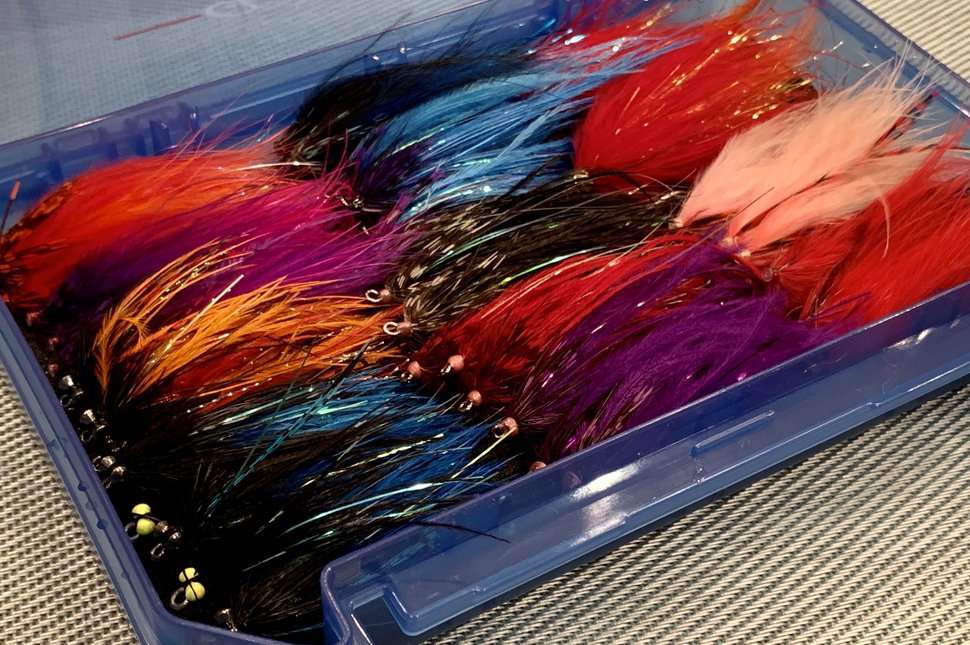
In recent articles we’ve talked about ways to get your fly deeper and choosing sink tips for winter steelhead fishing. So this week we thought we would maybe give you some thoughts on choosing the right fly for winter steelhead.
If you have been in the shop looking for winter steelhead flies you have probably noticed there are about 100 different choices I know from experience and from trying to help customers choose the right fly that it can be overwhelming.
The simple answer to the question of what fly should I use could be framed a couple of different ways. The easy one is what ever looks good to you. Or if you trust the opinion of the person that is picking flies for you, whatever they choose for you.
Now both of those answers are right. If you have faith or confidence in the fly you tie on, you will fish it with confidence and it will work. But I was thinking maybe we could do a little bit of a deeper dive into the topic.
The first thing I would suggest would be to remove some flies from the equation. The flies I would remove are the ones that are synonymous with steelhead, but in reality are summer steelhead flies. Those small beautiful hairwing flies like the Green Butt Skunk. We also should toss out the other summer flies like Muddlers and Skaters. Now I know that someone will want to make an argument for these flies and yeah that’s fine but as a general rule these are too small and are really specific to summer fish.
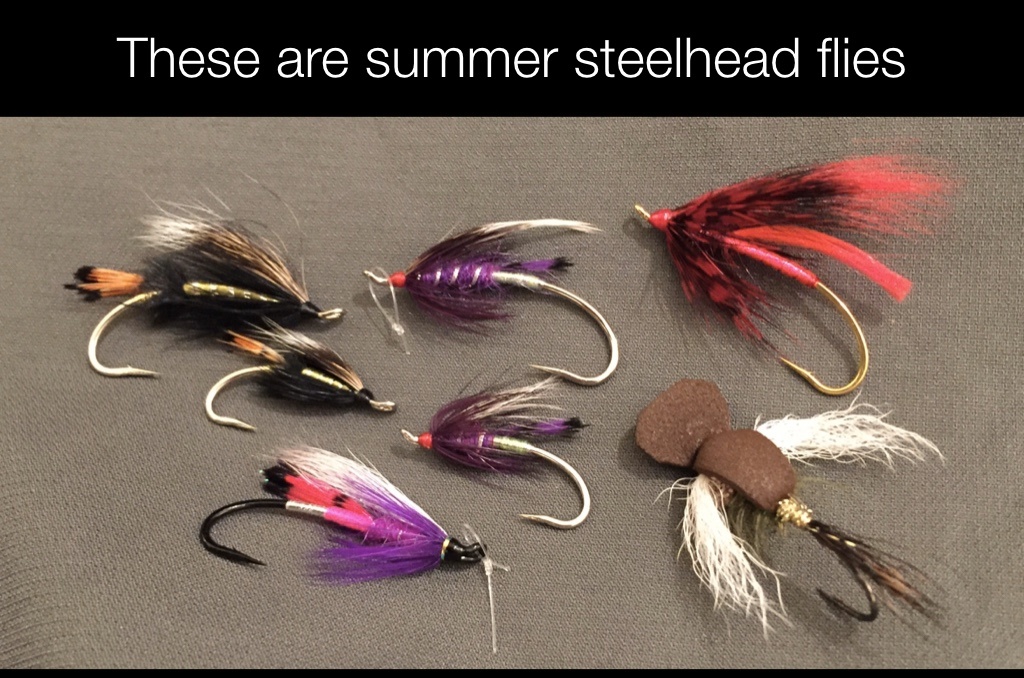
So now that we’ve removed about half the fly bins, let’s set some parameters that might help us decide what fly to choose. These parameters will help you whether you are tying your own or buying them from the bins in the fly shop.
Fly Selection Parameters:
Size
Color
Weight
Style - Hook, tube, or shank
Ease of casting
So when I am thinking about flies or more specifically what fly to fish, I will make a quick assessment and run through this list of things.
-Water condition; Is the water high or low, clear or colored up
-Water type; does the fly need to get deep, fish through the soft inside or through a long even glide
-Do I need to cast it far, or in tight casting conditions
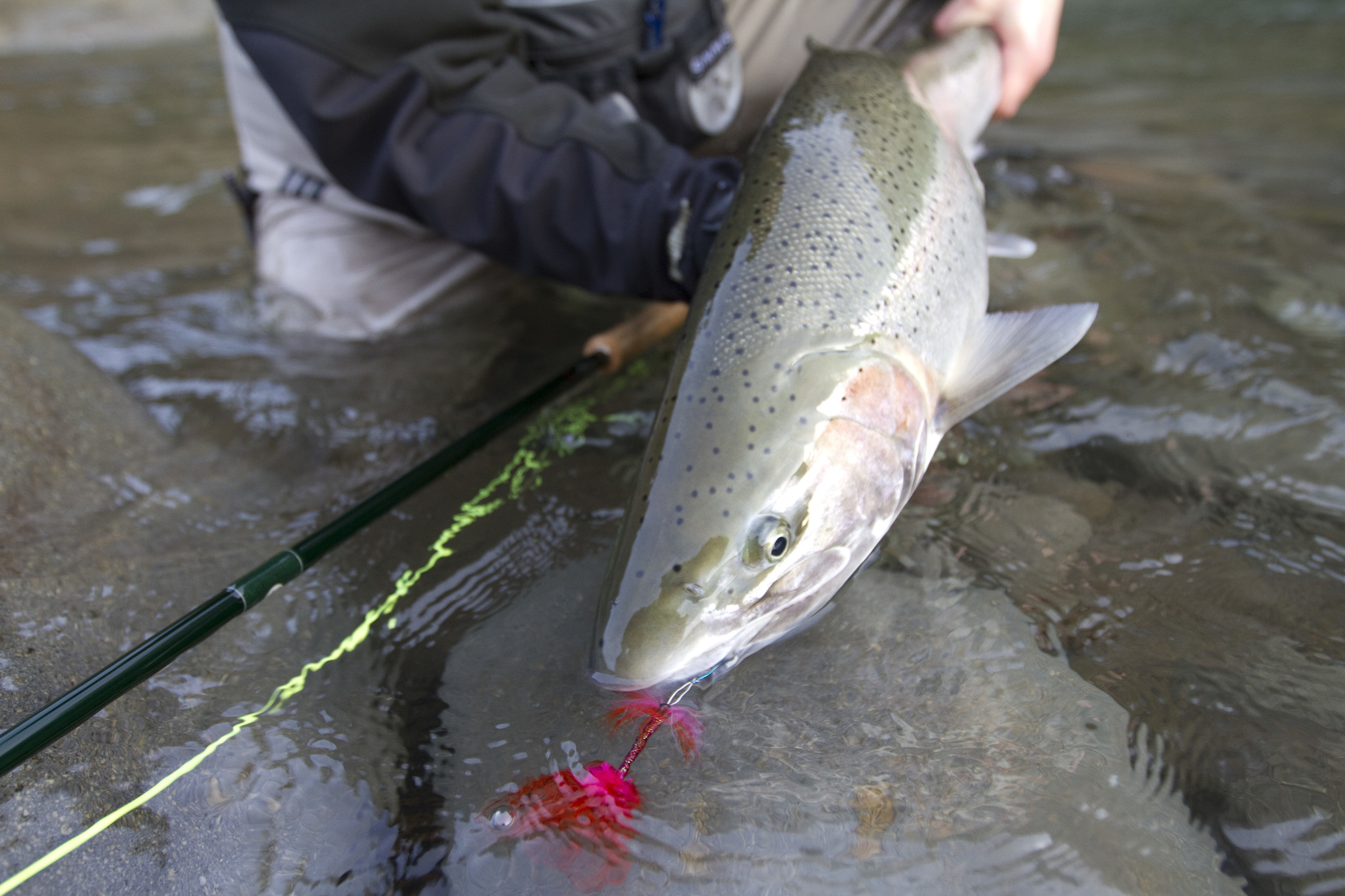
Answering these questions helps me to choose the fly. If the water is high and colored up I might choose a bigger fly that has a better silhouette. If it’s low I might want a smaller one that doesn’t spook the fish.
The water type that I’m fishing is going to help me choose if the fly is weighted or unweighted.
If I’m fishing in a tight spot I probably want a fly that’s going to be easy to cast.
I have a few other parameters or decisions I have made for myself that also help me to choose or maybe not to choose the fly.
One of the things I am a big proponent of is having fewer choices to help minimize choice overload. Quite often if you have too many flies in your fly box it takes a lot of time and deliberation about what fly to choose. After you’ve chosen your fly you fish it and doubt starts to creep in, you think you might have made the wrong choice. When that happens you aren’t thinking about fishing the fly anymore you’re thinking about changing your fly and your confidence waivers. When this happens the fish knows, they can sense it. So limiting you choices might help to eliminate this.
I was recently listening to a podcast from The Happiness Lab that was called choice overload and it really hammered home a lot of the points I tell people about when choosing a fly. Take a listen it’s really good.
The Happiness Lab: choice Overload
So when I am building a box or a fly selection flor myself or someone else I really narrow the selection down.
-Most of my flies are going to be 2.5”-3.5” long
-I usually pick two color combinations, a bright and a dark color. I like black and blue, and red and Orange or orange and pink.
-My biggest selection will be in weight, light, medium, and heavy. Unweighted for fishing into the soft inside edges, lightly weighted for the long even glides, and heavy to get down fast to fish through a deeper bucket.
-Mostly I fish tube flies because I like to have the ability to easily change out the hook but for my deeper fishing fly I will usually use a shank type fly as they sink faster.
I have a few other decision factors that help me out as well.

I enjoy beautifully tied intricate flies as much as anyone else but you will find in my personal selection simple flies that I can tie up quickly. You’ve probably heard them referred to as guide flies. There’s nothing worse than spending 30-60 minutes tying a fly and then losing it on the first cast. Then tying another one on and immediately losing it. Once that happens to start to fish more reserved, you don’t want to lose anymore flies and if you do hang another one up on the bottom you’re going to exert a lot of effort to get it back. Quite possibly at the expense of catching a fish.
There’s a story about an angler being given a magic fly that will catch a fish on every cast, the angler is too afraid to use it because they don’t want to lose it..... that’s kind of how I feel about those intricate time consuming ties. They are beautiful but can come at a cost; price, time, anxiety, or a steelhead.
I think if you were to look at my fly box you’d be somewhat disappointed. My flies are simple, two basic colors, and a few different weights. Most often times they aren’t stored in a fancy fly box but in ziplock bags. But since I only have a few choices it’s quick and easy for me to decide what to use. The hardest part is the color and I have a solution for that as well. Usually I am fishing with somebody or guiding. If I’m guiding two people I have the right amount of colors choices, one for each person. If I’m fishing with someone I ask them what they are going to put on and then I do the opposite.
Do yourself a favor and streamline your fly selection. Land on a couple of colors that you like, get them in a couple of different weights, and go for it. The fly choice shouldn’t be the hardest part of steelhead fishing the fight from the steelhead should be.
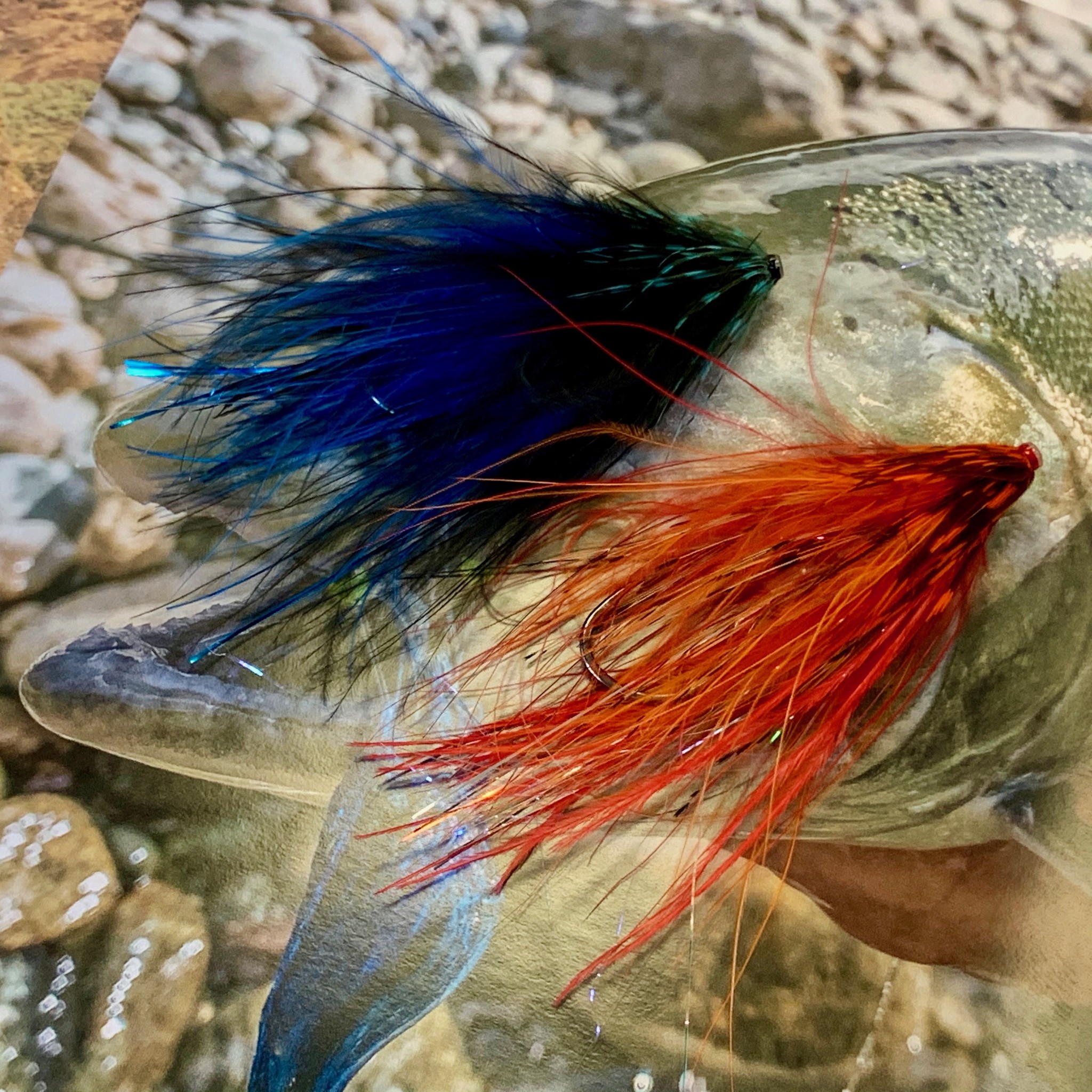 |
 |
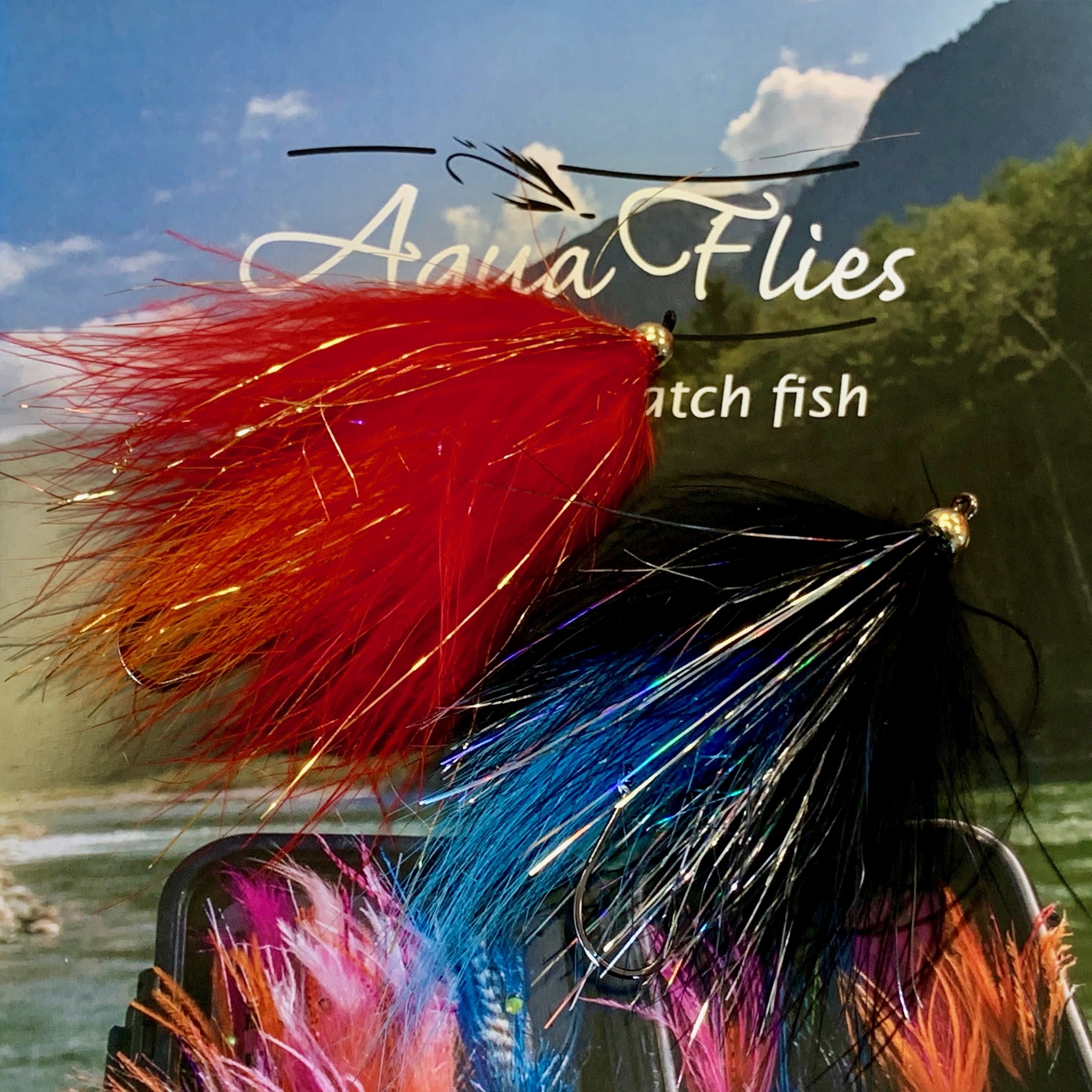 |
| Unweighted Plastic Tube Fly | Mini Intruder | Metal Detector |




